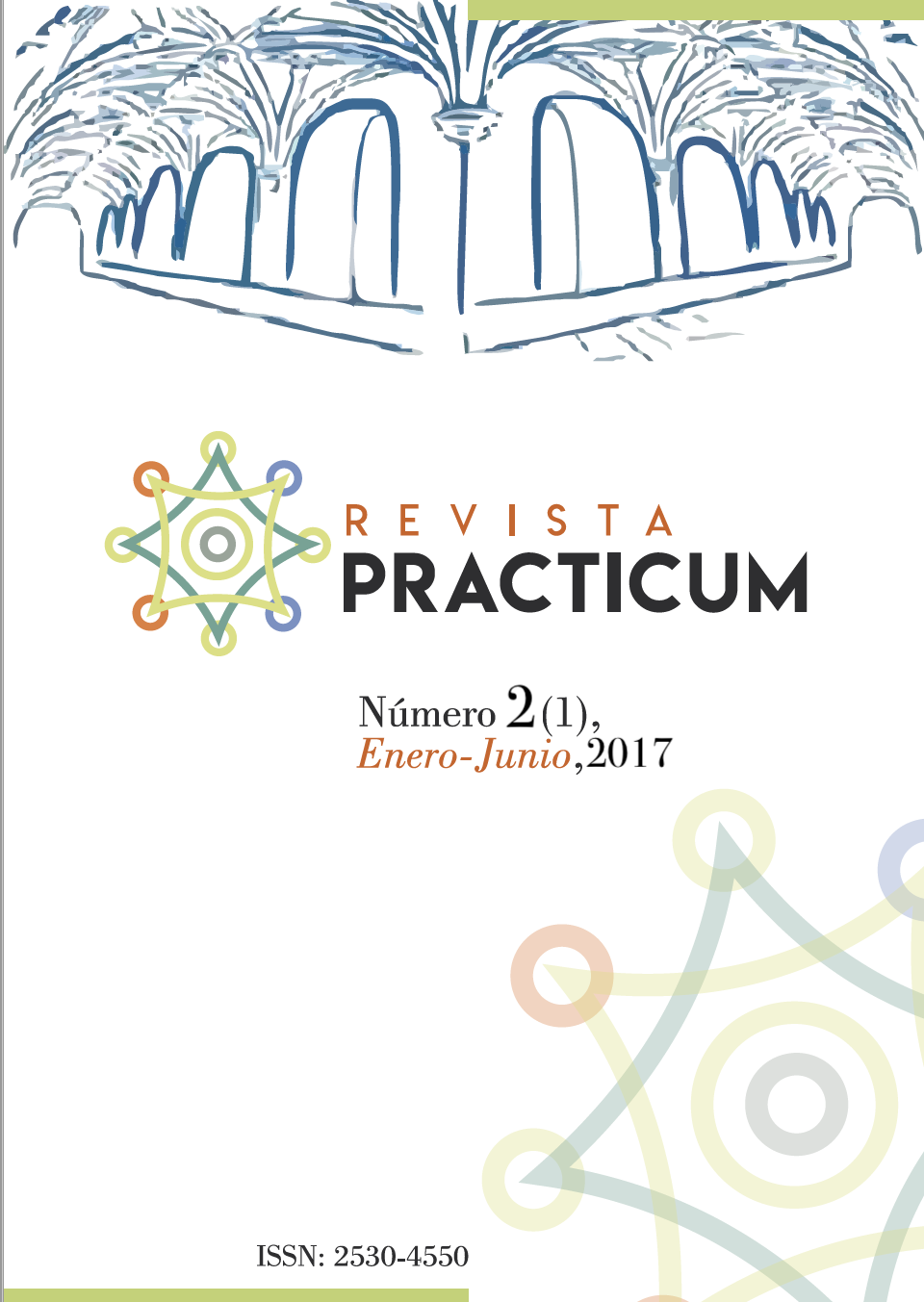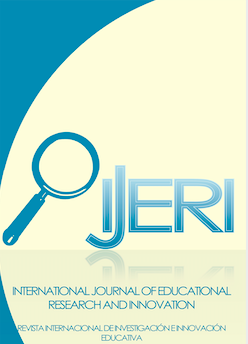Blogs: a tool for communication in teaching practice
DOI:
https://doi.org/10.24310/RevPracticumrep.v2i1.8266Keywords:
Blog, EFL, initial training, teaching practice, teaching journal, Liverpool Program.Abstract
This study discusses how future primary teachers live the experience of their teaching practice internship, and how they build their teaching identity and practical knowledge in an intercultural context, particularly in terms of teaching English as a foreign language. Through a case study with an interpretative-phenomenological approach, this paper analyzes the blog developed by 20 students from the University of Seville during their placement in schools in Seville and Liverpool.A dual objective was addressed with the use of a blog: first of all increasing and improving the process of monitoring and assessing student-teachers during their internship, and also finding out how they lived their experience and how this experience contributed to their training as future teachers. The analysis results bring out the strong role of affective components in the process of professional socialization, as well as the presence of a wide gap between their classroom practice and their initial training studies at university. The main conclusion of this study stresses a positive assessment of the use of blogs, as it shows their usefulness as a narrative and interactive space, and their potential as a communication tool to promote reflection (despite the predominance of affective/intuitive elements over technical/reflective ones).
Downloads
Metrics
References
Blázquez, F. & Tagle, T. (2010). Formación docente: un estudio de las creencias de alumnos y profesores sobre el proceso de enseñanza y aprendizaje del inglés. Revista Iberoamericana de Educación, 54(4), 1-12.
Cabaroglu, N. & Denicolo, P. (2008).Exploring student teacher belief development: An alternative constructivist technique, snake interviews, exemplified and evaluated. Personal Construct Theory & Practice, 5, 2840. Recuperado dehttp://www.pcpnet.org/journal/pctp08/cabaroglu08.html.
Cano, E., Portillo, M.C. & Puigdellívol, I. (2014). Evaluación de competencias en los entornos de prácticum de los estudios de magisterio mediante el uso de blogs. Tendencias Pedagógicas, 26, 9-28.
Casero-Ripollés, A. (2012). Más allá de los diarios: el consumo de noticias de los jóvenes en la era digital.Comunicar, 39, 151-158.doi: 10.3916/C39-2012-03-05.
Castaño, N., Prieto, C., Ruiz, E. & Sánchez, M. (1996). El profesor tutor del Prácticum: Propuesta de modelo. Revista Electrónica Interuniversitaria de Formación del Profesorado, 1(0), 1-5. Recuperado de http://dialnet.unirioja.es/servlet/articulo?codigo=2786700
Clark, C.M. & Peterson, P.L. (1984). Teachers’ thought processes. Occasional Paper, 72. East Lansing, MI: Institute for Research on Teaching, Michigan State University. Recuperado de http://eric.ed.gov/?id=ED251449
Deng, L. &Yuen, A.H.K. (2011). Towards a framework for educational affordances of blogs. Computers and Education, 56, 441-451.
Dillernbourg, P. (2012). Classroom Ergonomics. Jornada de Aprendizaje Colaborativo en Entornos Virtuales. Barcelona 26-27, noviembre. Recuperado de (www.youtube.com/watch?v=tdF_AnyiYfk) (28-03-2013).
Domingo, A. (2008). La práctica reflexiva en la formación inicial del maestros/as. La evaluación de un modelo. (Tesis de doctorado). Universitat Internacional de Catalunya.
Dos, B., & Demir, S. (2013). The analysis of the blogs created in a blended course through the reflective thinking perspective.Educational Sciences: Theory and Practice,13(2), 1335-1344. Recuperado de http://www.edam.com.tr/kuyeb/tr/makale.asp?ID=850&act=detay
Erickson, F. (1986).Qualitative Methods in Research on Teaching. En Wittrock, M.C. (ed.), The Handbook of Research on Teaching. New York: MacMillan.
Granado, C. &Puig, M. (2015). La identidad lectora de los maestros en formación como componente de su identidad docente. Un estudio de sus autobiografías como lectores. Ocnos, Revista de Estudios sobre Lectura, 13, 43-63.
Gómez-Torres, Mª.J. (2001). Un estudio longitudinal sobre el Prácticum en la formación de los maestros de la especialidad de Educación Especial. (Tesis inédita de doctorado). Universidad de Sevilla.
González Garcés, Á.M. (2008). Análisis crítico del prácticum de Magisterio en una facultad de Formación de Profesorado y Educación. (Tesis de doctorado). Universidad Autónoma de Madrid.
González, Á.M & Fernández, M.S. (2009). Análisis crítico del Prácticum de Magisterio en una Facultad de Formación de Profesorado y Educación. Tendencias Pedagógicas, 14, 417-432.
Gutiérrez, I. (2001). La enseñanza reflexiva en el prácticum de magisterio. Anuario Pedagógico, 5: Educación en derechos humanos, ciudadanía y formación crítica de maestros y maestras. Santo Domingo (República Dominicana): Centro Poveda. Recuperado de http://www.centropoveda.org/IMG/pdf/ensenanzareflexiva.pdf.
Horwitz, E.K. (1985). Using student beliefs about language learning and teaching in the foreign language methods course.Foreign Language Annals, 18(4), 333-340.
Johnson, K.E. (1992). Learning to teach: Instructional actions and decisions of preservice ESL teachers.TESOL Quarterly, 26(3), 507.
Ladyshewsky, R.K. & Cardner, P. (2008).Peer assisted learning and blogging: A strategy to promote reflective practice during clinical fieldwork. Australasian Journal of Educational Technology, 24(3), 241-257.
López-Vidales,N. & González-Aldea, P.(2014). Audioblogs y Tvblogs, herramientas para el aprendizaje colaborativo en Periodismo. Comunicar, 42,45-53.doi: http://dx.doi.org/10.3916/C42-2014-04.
Marcelo, C. (2011). Modelos innovadores en la supervisión del practicum. En Raposo, M., Martínez, M.E., Meyer, M. (1990). Developing Transcultural Competente: Case Studies of Advanced Foreing Language Learners.EnButtjes, D. & Byram, M. (eds), Mediating Languages and Cultures. Clevedon: Multilingual Matters Ltd., 136-158.
Pérez Gómez, Á.I. (1999). El practicum de enseñanza y la socialización profesional de los futuros docentes. En Á. Pérez Gómez, J. Barquín Ruiz, & J. F. Angulo Rasco eds., Desarrollo profesional del docente: política, investigación y práctica(pp. 636-660). Madrid: Akal.
Potter, J.& Banaji,S. (2012). Medios sociales y autogestión del perfil digital: identidad y pedagogía con blogs en un máster. Comunicar, 38, 83-91. http://dx.doi.org/10.3916/C38-2012-02-09.
Portillo, M.C., Cano, E. & Giné, N. (2012). La escritura de blogs para la evaluación de competencias del prácticum de formación del profesorado. Bordón, 64(4), 63-81.
Rekalde, I. (2009). ¿Cómo podemos aprender a mejorar nuestras prácticas docentes?. Los diarios del alumnado universitario: herramienta de formación permanente del profesorado. Bordón, 61(4), 109-122.
Roca, J. & Manchón, R.M. (2007). Análisis de la reflexión y preparación para la actividad reflexiva en el prácticum de maestro (Inglés). Revista de Educación, 342, 373-396.
Stake, R. E. (1995).The Art of Case Study Research.Londres: Sage.
Vaillant, D. (2007). La identidad docente. I Congreso Internacional Nuevas Tendencias en la Formación del Profesorado. Barcelona: Grupo de Trabajo sobre Desarrollo Profesional Docente en América Latina. Recuperado de https://goo.gl/ntETILYin, R.K. (2004).The Case Study Anthology. Londres: Sage.
Downloads
Published
How to Cite
Issue
Section
License
Acceptance of the work implies that the author grants Revista Prácticum the exclusive rights to reproduce, distribute and sell his or her work worldwide, both in digital and paper formats, CD-ROM, etc.
Likewise, the authors shall grant Revista Prácticum the rights of dissemination, public communication on the Internet and IT networks, data buses, as well as any other portals or electronic devices for online consultation of its contents and extracts, under the conditions of the portal, repositories or databases where the work is stored.
Revista Prácticum allows authors to publish and disseminate their articles and works on their personal websites, research teams, institutional repositories and scientific databases. All this in accordance with the Creative Commons 4.0 License









8.png)








